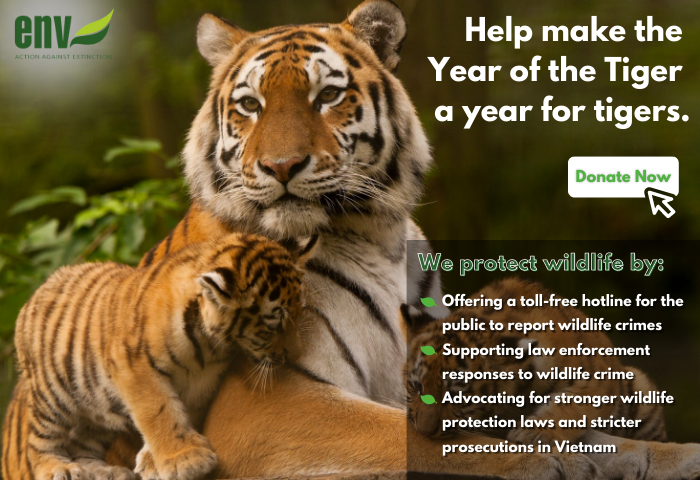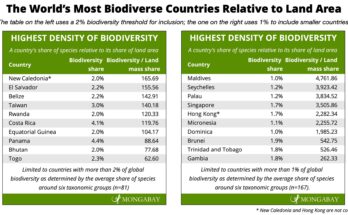Laws protect endangered wildlife by regulating human activities and preserving habitats. These laws are crucial for the survival of many species.
Wildlife faces numerous threats, from habitat loss to poaching. To counter these dangers, various laws have been enacted globally. These laws aim to conserve wildlife and ensure their habitats remain undisturbed. Protecting endangered species is not just about saving animals; it’s about maintaining balance in nature.
Understanding these laws helps us appreciate the efforts taken to safeguard our planet’s biodiversity. This blog post explores the key laws that protect endangered wildlife and highlights their importance in conservation efforts. Let’s delve into the legal frameworks that are making a difference for endangered species worldwide.

Introduction To Wildlife Protection Laws
Wildlife protection laws are crucial for preserving the earth’s biodiversity. These laws ensure the survival of many endangered species. They address threats like habitat loss, poaching, and illegal trade. This section will introduce the importance and scope of wildlife protection laws.
Importance Of Wildlife Conservation
Wildlife conservation maintains ecological balance. Each species plays a unique role in its ecosystem. Losing one can disrupt this balance. Conservation efforts also protect natural resources. Many plants and animals provide food, medicine, and other essentials. Preserving wildlife ensures future generations can benefit from these resources.
Overview Of Global Threats
Endangered wildlife face many global threats. Habitat destruction is one of the biggest issues. Urbanization and deforestation destroy natural habitats. This leaves animals without homes. Illegal poaching and trade also pose significant risks. Many species are hunted for their skins, tusks, or bones. Climate change further exacerbates these problems. Rising temperatures and extreme weather events can alter habitats, making them unlivable.

Endangered Species Act (esa)
The Endangered Species Act (ESA) is a key law in the United States. It aims to protect and recover imperiled species and their habitats. This law has been vital in saving numerous species from extinction. It provides a framework for the conservation of endangered and threatened species.
History Of The Esa
The ESA was signed into law by President Richard Nixon in 1973. It was created due to growing concerns about the loss of wildlife. The law has evolved over time to strengthen its protections. Early laws like the Endangered Species Preservation Act of 1966 laid the groundwork. The ESA expanded these protections significantly.
Key Provisions Of The Esa
The ESA includes several critical provisions:
- Listing of Species: The ESA allows for species to be listed as endangered or threatened. This listing is based on scientific data.
- Critical Habitat Designation: The ESA designates critical habitats essential for the survival of listed species. This helps protect the areas where these species live.
- Recovery Plans: Recovery plans are developed for listed species. These plans outline steps for restoring populations to healthy levels.
- Prohibition of Harm: The ESA prohibits harming, harassing, or killing listed species. This is crucial for their protection.
- Federal Agency Cooperation: Federal agencies must ensure their actions do not jeopardize listed species. They must also use their authority to further the purposes of the ESA.
| Provision | Description |
|---|---|
| Listing of Species | Species are listed based on scientific data |
| Critical Habitat Designation | Protects essential habitats of listed species |
| Recovery Plans | Outlines steps to restore species populations |
| Prohibition of Harm | Protects listed species from harm |
| Federal Agency Cooperation | Ensures federal actions do not harm listed species |
Convention On International Trade In Endangered Species (cites)
The Convention on International Trade in Endangered Species (CITES) is an international agreement. It aims to ensure that trade in wild animals and plants does not threaten their survival. Signed by 183 countries, it plays a key role in wildlife conservation. This agreement covers around 38,000 species, including both plants and animals.
Purpose Of Cites
CITES regulates international trade in endangered species. It aims to prevent their over-exploitation. The agreement ensures that international trade does not harm the survival of these species. Through strict controls and permits, CITES helps to monitor and regulate trade activities.
Impact Of Cites On Global Trade
CITES has a significant impact on global trade. It restricts trade in endangered species, making it more sustainable. Countries must follow strict guidelines to trade these species legally. This reduces illegal trade and promotes conservation efforts.
Marine Mammal Protection Act (mmpa)
The Marine Mammal Protection Act (MMPA) is a law that protects marine mammals. It was enacted in 1972 to prevent their decline. This act ensures that marine mammals are not harmed, captured, or killed. It covers species like whales, dolphins, and seals.
Objectives Of The Mmpa
The main objective of the MMPA is to protect marine mammals. The act aims to maintain healthy populations of these species. It also seeks to restore those that are endangered or depleted.
The MMPA prohibits the “take” of marine mammals in U.S. waters. “Take” includes hunting, capturing, or killing these animals. It also addresses harassment that may harm them.
Another goal is to manage human activities impacting marine mammals. This includes fishing, boating, and other ocean-related activities. The act ensures these activities do not harm marine mammals.
Success Stories Under The Mmpa
The MMPA has led to many success stories. One notable example is the recovery of the humpback whale population. These whales were once on the brink of extinction. Due to the MMPA, their numbers have significantly increased.
Another success is the protection of the sea otter. These animals were heavily hunted for their fur. The MMPA has helped increase their population along the U.S. coasts.
The act has also contributed to the preservation of the manatee. These gentle giants faced threats from boat collisions and habitat loss. With the MMPA, their numbers have stabilized.
The MMPA has proven effective in protecting marine mammals. It continues to play a crucial role in their conservation.
Migratory Bird Treaty Act (mbta)
The Migratory Bird Treaty Act (MBTA) is a key law that protects migratory birds. It was enacted to safeguard birds that travel between countries. This act is crucial for the conservation of bird species.
Origins Of The Mbta
The MBTA was established in 1918. It is a treaty between the United States and Great Britain (on behalf of Canada). The act was a response to the decline in bird populations.
At that time, many birds were hunted for their feathers. The feathers were used in the fashion industry. The MBTA aimed to stop this unsustainable hunting. Over time, the act expanded to include agreements with other countries.
Protections Under The Mbta
The MBTA protects over 800 species of birds. It prohibits the harm, trade, and possession of these birds. This includes their nests and eggs.
Violations of the MBTA can lead to fines and penalties. Both individuals and organizations can be held accountable. The U.S. Fish and Wildlife Service enforces the MBTA.
| Protected Actions | Details |
|---|---|
| Harm | Injuring or killing birds |
| Trade | Selling or trading birds, nests, or eggs |
| Possession | Owning birds, nests, or eggs |
The MBTA has been successful in protecting many bird species. It is a vital part of wildlife conservation efforts. Understanding this law helps in preserving our natural heritage.

Habitat Conservation Plans (hcps)
Habitat Conservation Plans (HCPs) are essential for protecting endangered wildlife. These plans balance the needs of development with the protection of habitat. They are part of the Endangered Species Act (ESA). HCPs help conserve habitats while allowing some land use changes.
Role Of Hcps
The main role of HCPs is to protect species. They ensure that economic activities do not harm wildlife habitats. HCPs are designed with the input of scientists, landowners, and government agencies. This collaborative approach helps create effective conservation strategies.
HCPs include:
- Identification of the species to be protected
- Assessment of the impacts of development
- Measures to minimize and mitigate these impacts
- Monitoring and reporting requirements
Examples Of Effective Hcps
Several HCPs have shown success in conserving habitats and species. Below are some notable examples:
| HCP Name | Location | Protected Species |
|---|---|---|
| San Bruno Mountain HCP | California | Mission Blue Butterfly |
| Washington County HCP | Utah | Desert Tortoise |
| Balcones Canyonlands HCP | Texas | Golden-cheeked Warbler |
The San Bruno Mountain HCP is one of the oldest and most studied. It protects the Mission Blue Butterfly and its habitat. The plan has helped balance urban development with conservation.
The Washington County HCP in Utah focuses on the Desert Tortoise. It has protected large areas of desert habitat. This effort has contributed significantly to the species’ survival.
The Balcones Canyonlands HCP in Texas safeguards the Golden-cheeked Warbler. This plan has preserved critical breeding areas. It has also helped maintain the natural landscape.
These examples highlight how HCPs can effectively protect endangered species while allowing for responsible development. They provide a blueprint for future conservation efforts.
International Union For Conservation Of Nature (iucn)
The International Union for Conservation of Nature (IUCN) is a global authority on wildlife conservation. It works to protect endangered species and their habitats. The IUCN brings together governments, scientists, and other stakeholders. They collaborate to find solutions to wildlife threats.
Function Of The Iucn
The IUCN plays a crucial role in wildlife conservation. It conducts research, provides data, and raises awareness. It also advises governments on creating effective conservation laws. The IUCN helps in setting global standards for wildlife protection.
Red List Of Threatened Species
The IUCN maintains the Red List of Threatened Species. This list is a comprehensive inventory of the global conservation status of species. It highlights those at risk of extinction. The Red List helps prioritize conservation actions and policies.
Conservationists use the Red List to track species’ health. The list is updated regularly with new data. This ensures it reflects current threats and conservation needs. The Red List is vital for protecting endangered wildlife worldwide.
Challenges In Enforcement
Protecting endangered wildlife is a global priority. Yet, enforcing laws that safeguard these species presents numerous challenges. These challenges hinder the effectiveness of conservation efforts. Understanding these barriers and examining real-life cases can provide insights into improving enforcement.
Barriers To Effective Implementation
Several factors impede the enforcement of wildlife protection laws:
- Lack of Resources: Many regions lack the financial and human resources needed for effective enforcement. This includes insufficient funding for patrols, equipment, and training.
- Corruption: Corruption within enforcement agencies can undermine conservation efforts. Bribes and illegal activities often go unchecked due to corrupt officials.
- Weak Legal Frameworks: Some countries have outdated or weak laws that fail to provide adequate protection for endangered species. These laws may lack the necessary penalties to deter illegal activities.
- Limited Public Awareness: Public ignorance about the importance of wildlife conservation can also be a barrier. Without community support, enforcement efforts are less effective.
- Geographical Challenges: Remote and inaccessible areas make monitoring and enforcement difficult. Poachers often exploit these regions to evade detection.
Case Studies On Enforcement
Examining specific case studies can highlight the challenges and successes in enforcing wildlife protection laws:
| Case Study | Country | Challenges | Outcomes |
|---|---|---|---|
| Rangers vs. Poachers | Kenya | Corruption, Limited Resources | Increased patrols reduced poaching incidents by 30%. |
| Tiger Protection | India | Weak Legal Frameworks, Public Awareness | Stronger laws and community programs led to a 20% increase in tiger population. |
| Marine Life Conservation | Philippines | Geographical Challenges, Lack of Resources | Collaborations with local fishermen improved monitoring and protection. |
These case studies show that while challenges exist, strategic efforts can lead to positive outcomes. By addressing these barriers, we can enhance the enforcement of laws protecting endangered wildlife.
Future Directions For Wildlife Protection
The fight to protect endangered wildlife is evolving. As we move forward, new strategies are emerging. These approaches focus on preserving biodiversity and ensuring the survival of threatened species. Let’s explore some of these future directions for wildlife protection.
Innovative Conservation Strategies
Innovative strategies play a key role in wildlife protection. Technology is at the forefront. Drones and satellite imaging help monitor wildlife populations. These tools provide real-time data. This data is crucial for tracking endangered species and their habitats.
Genetic techniques are also making waves. Scientists can now use DNA analysis to study animal populations. This helps in identifying genetic diversity. It also aids in understanding breeding patterns. These insights are vital for creating effective conservation plans.
Community involvement is another important strategy. Local communities are encouraged to participate in conservation efforts. They help in habitat restoration and wildlife monitoring. This creates a sense of ownership and responsibility towards wildlife.
Role Of Public Awareness And Advocacy
Public awareness and advocacy are essential for wildlife protection. Educating the public about endangered species creates a more informed society. Knowledgeable people are more likely to support conservation efforts.
Advocacy groups play a significant role. They lobby for stronger wildlife protection laws. They also work to ensure these laws are enforced. This helps in creating a safer environment for endangered species.
Social media is a powerful tool. Platforms like Facebook and Twitter spread awareness quickly. Campaigns can go viral, reaching a global audience. This can lead to increased support and funding for conservation projects.
Educational programs in schools also make a difference. Teaching children about wildlife conservation instills a sense of responsibility. It ensures that the next generation will continue to protect endangered species.
Frequently Asked Questions
What Are The Main Laws Protecting Endangered Wildlife?
Several key laws protect endangered wildlife, including the Endangered Species Act, the Convention on International Trade in Endangered Species, and the Marine Mammal Protection Act.
How Does The Endangered Species Act Work?
The Endangered Species Act protects species at risk by listing them as endangered or threatened. It also designates critical habitats and implements recovery plans.
What Is Cites And Its Purpose?
CITES, or the Convention on International Trade in Endangered Species, regulates international trade of endangered species to prevent exploitation and extinction.
Which Agency Enforces Wildlife Protection Laws In The Us?
The US Fish and Wildlife Service enforces wildlife protection laws. They manage conservation efforts and ensure compliance with regulations.
Conclusion
Protecting endangered wildlife is crucial for our planet’s future. Laws like the Endangered Species Act help. They provide needed protection to vulnerable animals. International treaties also play a vital role. They ensure global cooperation in conservation efforts. Everyone can help by supporting wildlife organizations.
Small actions can lead to big changes. Spread awareness and advocate for stronger laws. Together, we can make a difference. Protecting wildlife is protecting our future. Let’s act now and ensure a thriving planet for generations to come.



